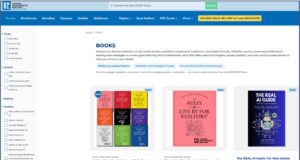Rose Center for Public Leadership Working with Long Beach Mayor on Boeing C-17 Site
LONG BEACH, CALIF. – February 10, 2016 – (RealEstateRama) —The Rose Center for Public Leadership, jointly operated by the National League of Cities (NLC) and the Urban Land Institute (ULI), is working this week with Long Beach Mayor Robert Garcia to help the City, its partners and stakeholders transition Boeing’s closing C-17 military airplane manufacturing facility back into productive use, and develop new economic development, industry attraction, job retention and workforce training strategies that align with the mayor’s vision of Long Beach becoming a hub for emerging technology and innovation.
“Repurposing the Boeing site is a priority for the City and the continued development of Douglas Park as a business and technology center,” said Mayor Garcia. “We are very grateful to the Rose Center, the National League of Cities, and the Urban Land Institute for their outstanding support of this transition.”
Boeing Corporation is closing its manufacturing facility for the C-17 Globemaster III, a large transport military airplane. During its peak, the C-17 facility employed up to 5,000 people, but since 2010 Boeing has steadily downsized the C-17 workforce. The company is committed to a long-term presence in Long Beach because of its historical investment in the city and will continue to maintain a sizeable workforce on other projects. The City is seeking a development strategy for the site to be acquired, developed or planned to further the City’s vision of becoming a hub for emerging technology and innovation uses, with a focus on job retention and creation. The study area is about 130 acres including the Boeing-owned C-17 site, portions of the Long Beach airport leased/ used by Boeing and parcels around Cherry Avenue.
“No city can take a back seat to its economic future,” said Rose Center Director Jess Zimbabwe. “Mayor Garcia and the City of Long Beach recognize the economic importance of this study area, and we’re looking forward to helping them define a vision for it.”
The Rose Center’s mission is to encourage and support excellence in land use decision making by providing public officials with access to information, best practices, peer networks, and other resources to foster creative, efficient, practical, and sustainable land use policies. Each year, the center’s Daniel Rose Fellowship program invites the mayors of four large U.S. cities to select a team with land use decision-making authority to receive technical assistance on a local land use challenge. This year’s fellowship class is from the cities of Birmingham, Alabama; Denver; Long Beach, California; and Rochester, New York.
“The Long Beach project to repurpose a manufacturing plant into a center of innovation and technology is a great example of ways that cities can support job creation and long-term economic vitality in their communities,” said Clarence E. Anthony, CEO and executive director of NLC.
“The Rose Center has an excellent track record of helping cities reinvent themselves to be more vibrant, livable and successful,” said ULI Global Chief Executive Officer Patrick L. Phillips. “We’re excited about the Center’s land use challenge in Long Beach, and we look forward to the panel’s recommendations on how this site can be repurposed for future uses related to technology and the innovation economy.”
Mayor Garcia’s team includes Rose Fellows Deputy City Manager Arturo Sanchez; City Engineer Sean Crumby; and Linda Tatum, Manager of the Department of Development Service’s Planning Bureau; who are assisted by senior planner Carrie Tai, also in the Planning Bureau. In addition to technical assistance on their city’s land use challenge, the fellowship program provides participants with leadership training and professional development opportunities from NLC’s and ULI’s respective programming and networks of public- and private-sector members.
The panel will be briefed by Mayor Garcia and his team, tour the study area and meet with community, business and civic leaders and other stakeholders. Drawing upon their professional expertise and experience, the panelists will apply the information gathered during the study visit and present recommendations for how the City, its partners and stakeholders can achieve their goals for the area. All of Long Beach’s expenses to participate in the program—including the panel’s visit—are underwritten by the Rose Center to ensure objectivity during the process.
The panel will be co-chaired by Long Beach’s Rose Fellowship faculty advisers: planning, redevelopment and transportation consultant Laura Aldrete, principal planning associate with Matrix Design Group in Denver; and commercial developer and former banking executive Christopher Kurz, president & CEO of Baltimore-based Linden Associates. It also includes Rose Fellows from the other three cities in this year’s class: urban planner Denise Bell, floodplain administrator for the City of Birmingham; Crissy Fanganello, transportation director for the City & County of Denver’s Department of Public Works; and Zina Lagonegro, director of planning and zoning for the City of Rochester’s Department of Neighborhood and Business Development. Also serving on the panel are former Miami planning director Anna Gelabert-Sanchez, principal with Coral Gables, Fla.-based Gelabert-Sanchez & Associates; real estate attorney John J. Griffin, Jr. from the Boston offices of Greenberg Traurig; Anne Hayes, director of transformative development at MassDevelopment, the Commonwealth of Massachusetts’s economic development agency; architect Paul Okamoto, partner with San Francisco-based Okamoto Saijo Architecture; former Pittsburgh mayor Tom Murphy, senior resident fellow for urban development at ULI in Washington, D.C., industrial developer Chris Wilkes, partner and senior vice president for development at Indianapolis-based Holladay Properties; and community development and finance consultant Roger Williams, principal with Potomac, Maryland-based Rogelio Williams & Associates.
The Daniel Rose Fellowship is the flagship program of the Rose Center, established in 2008 by the ULI Foundation Governor Daniel Rose. The purpose of the program is to provide city leaders with the insights, peer-to-peer learning, and analysis needed to successfully improve their cities. The fellowship’s program of work includes a study tour of another U.S. or foreign city, working retreats at NLC’s and ULI’s national conferences, and study visits to each of the four fellowship cities. The cities of Austin, Texas; Boston; Charlotte, North Carolina; Detroit; Hartford, Connecticut; Honolulu; Houston; Indianapolis; Kansas City, Missouri; Louisville, Kentucky; Memphis, Tennessee; Minneapolis; Nashville, Tennessee; Oakland, California; Omaha, Nebraska; Philadelphia; Phoenix; Pittsburgh; Portland, Oregon; Providence, Rhode Island; Sacramento, California; Seattle; Tacoma, Washington and Tampa, Florida have participated in the first six years of the fellowship program.
NOTE TO EDITORS AND REPORTERS: Representatives of the Rose Center will be making a public presentation with preliminary findings from 9-11 a.m. PST on Friday, February 12 at the Long Beach Public Library, 101 Pacific Avenue, in the auditorium.
About the National League of Cities
The National League of Cities (NLC) is dedicated to helping city leaders build better communities. NLC is a resource and advocate for 19,000 cities, towns and villages, representing more than 218 million Americans.
About the Urban Land Institute
The Urban Land Institute is a nonprofit education and research institute supported by its members. Its mission is to provide leadership in the responsible use of land and in creating and sustaining thriving communities worldwide. Established in 1936, the Institute has more than 36,000 members worldwide representing all aspects of land use and development disciplines.
















